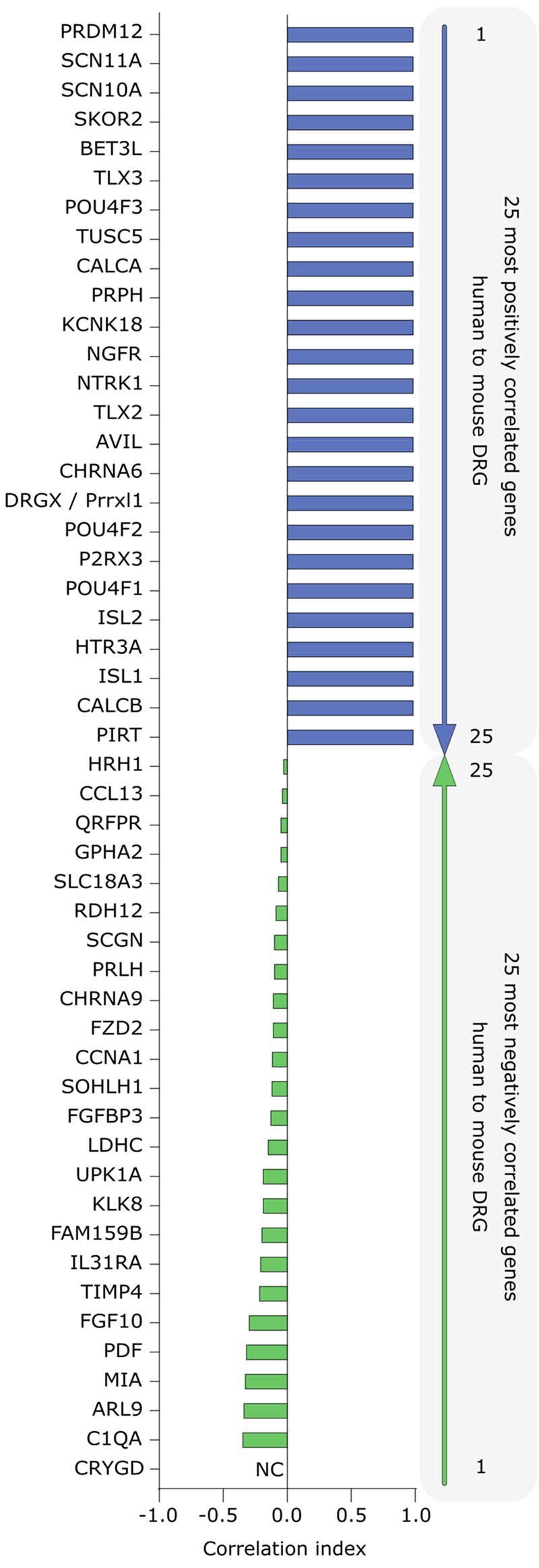Figure 3.

Top 25 positively and negatively correlated DRG-enriched gene expression profiles between pharmacologically relevant human and mouse tissues from RNA sequencing. The figure shows the top 25 most positively and negatively correlated (in blue and green respectively) DRG-enriched gene abundance profiles in 12 tissues across human and mouse gene orthologues. The tissues include the DRG, neural tissue (such as spinal cord and brain subregions), and pharmacologically relevant non-neural tissues (such as skeletal muscle and liver). Only genes with relative abundance >0.1 transcripts per kilobase million (TPM) in human DRGs are shown in either list. The methods are described in detail in Ray et al.55 Among the positively correlated genes, the list is populated with many of the most widely studied genes in the pain and somatosensation fields. Among the anticorrelated genes that are species-specifically enriched in human DRG, most of these genes are relatively unstudied and/or have been validated at the cellular level in independent experiments (e.g. CHRNA9 and IL31RA, discussed in main text). Gene orthologues with different names in human and mice show both names. NC = not calculated since the gene is not expressed in any of the profiled mouse tissues.
